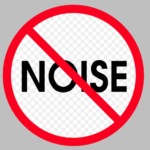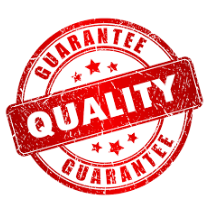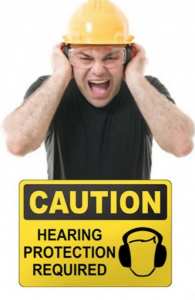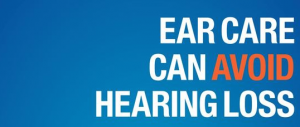Noise Pollution: What is it
Every day, we experience sound in our environment, such as the sounds from television and radio, household appliances, and traffic. Normally, these sounds are at safe levels that don’t damage our hearing. But sounds can be harmful when they are too loud, even for a brief time, or when they are both loud and long-lasting.
The growing noise pollution problem has many different causes. Booming population growth and the loss of rural land to urban sprawl both play a role. Other causes include the lack of adequate anti-noise regulations in many parts of the world; the electronic nature of our age, which encourages many noisy gadgets; the rising number of vehicles on the roads; and busier airports.
What is Noise Pollution: Environmental Protection Agency
According to the US Environmental Protection Agency Noise Pollution is:
“The traditional definition of noise is “unwanted or disturbing sound”. Sound becomes unwanted when it either interferes with normal activities such as sleeping, conversation, or disrupts or diminishes one’s quality of life. The fact that you can’t see, taste or smell it may help explain why it has not received as much attention as other types of pollution, such as air pollution, or water pollution. The air around us is constantly filled with sounds, yet most of us would probably not say we are surrounded by noise. Though for some, the persistent and escalating sources of sound can often be considered an annoyance. This “annoyance” can have major consequences, primarily to one’s overall health.”¹
In the 1970s, the US Environmental Protection Agency (EPA) set a recommended noise exposure limit of 55 decibels in a 24-hour period, with nighttime noise weighted more heavily because it can interfere with sleep. For comparison, a quiet suburb has a decibel level of about 50, while freeway traffic is closer to 70 and a chain saw is 120 decibels.The U.S. Environmental Protection Agency (EPA) has long identified transportation—passenger vehicles, trains, buses, motorcycles, medium and heavy trucks, and aircraft—as one of the most pervasive outdoor noise sources, estimating in its 1981 Noise Effects Handbook that more than 100 million people in the United States are exposed to noise sources from traffic near their homes.
Noise pollution is an often-overlooked source of environmental stress that can raise your risk of serious health conditions, including heart disease. In the US it’s estimated that 100 million people are exposed to unhealthy levels of noise, typically from automobile and aircraft traffic (although everything from leaf blowers and lawnmowers to loud music can also contribute). If you find yourself exposed to noise pollution on a daily basis, we strongly suggest you protect your earing with two way communication Hearing Protection Devices such a dB Blockers.
Quieting Noise Pollution Could Save $3.9 Billion a Year
Noise pollution may increase your risk of hearing loss, stress, sleep disturbances, and heart disease. A new analysis conducted an environmental assessment of US noise pollution as a cardiovascular health hazard, and revealed small decreases in noise could add up to major economic savings.
The analyses suggested that a 5-decibel noise reduction would reduce the prevalence of high blood pressure by 1.4 percent and coronary heart disease by 1.8 percent. The annual economic benefit was estimated at $3.9 billion.3
The researchers assumed that noise exposure levels in 2013 were the same as those assessed in 1981. However, as urbanization has increased it’s likely these are underestimates and reductions in noise may impact even more people than the study suggested.
Silence is Golden
If you can’t avoid a noisy environment, should you play white noise in order to drown out the rest? White noise is a nondescript background hum, kind of like the noise of a fan or of someone saying “Shhhh!” continuously. Listening to white noise may turn out to be better than listening to intermittent speech if it successfully drowns out the speech, but that doesn’t mean it’s ideal. Learn more about how to protect yourself from noise.
SOURCES:
- https://www.epa.gov/clean-air-act-overview/clean-air-act-title-iv-noise-pollution
- Senior author Richard L. Neitzel of the University of Michigan School of Public Health in Ann Arbor told Reuters:
- http://articles.mercola.com/sites/articles/archive/2015/06/20/noise-pollution.aspx



 enough to cause immediate damage. Even if the damage isn’t felt immediately, noise damage accumulates over time. So be sure to take along hearing protection; check out
enough to cause immediate damage. Even if the damage isn’t felt immediately, noise damage accumulates over time. So be sure to take along hearing protection; check out 

 include: widened market potential, compliance to procurement tenders, improved efficiency and cost savings, higher level of customer service, and therefore satisfaction, and heightened staff moral and motivation.
include: widened market potential, compliance to procurement tenders, improved efficiency and cost savings, higher level of customer service, and therefore satisfaction, and heightened staff moral and motivation.


 l tones of conversation caused a piercing, jabbing pain in his inner ear. He stopped working in 2011, when the pain became unbearable. He also hears ringing in his ears and experiences dizziness, both side effects of the auditory damage.
l tones of conversation caused a piercing, jabbing pain in his inner ear. He stopped working in 2011, when the pain became unbearable. He also hears ringing in his ears and experiences dizziness, both side effects of the auditory damage.
 can dramatically increase their stress levels. Employers should be aware of the impact sound can have on certain employees and offer some sound reducing or sound barrier settings to enable workers to work in a less stressful environment where they can better concentrate and be more productive. Workers under increased stress have higher sick time, are often less productive and have higher risk of accidents or work related injuries.
can dramatically increase their stress levels. Employers should be aware of the impact sound can have on certain employees and offer some sound reducing or sound barrier settings to enable workers to work in a less stressful environment where they can better concentrate and be more productive. Workers under increased stress have higher sick time, are often less productive and have higher risk of accidents or work related injuries. Some jobs require a high level of hearing capability in order to correctly perform the job. For example hearing a certain noise from machinery or equipment can notify the worker how to best use the equipment. Shifting a gear shift or knowing when a piece of machinery is in need of repair can often be noise induced warnings that a hearing impaired worker or a worker with noise blocking hearing protection devices may not hear.
Some jobs require a high level of hearing capability in order to correctly perform the job. For example hearing a certain noise from machinery or equipment can notify the worker how to best use the equipment. Shifting a gear shift or knowing when a piece of machinery is in need of repair can often be noise induced warnings that a hearing impaired worker or a worker with noise blocking hearing protection devices may not hear.
 difficult or less enjoyable. There may also be a misunderstanding that someone is not smart enough to understand directions or communication when it may be the person simply has not properly heard. This can all lead to more stress in the workplace if alienation, discrimination or harassment become a part of the workplace.
difficult or less enjoyable. There may also be a misunderstanding that someone is not smart enough to understand directions or communication when it may be the person simply has not properly heard. This can all lead to more stress in the workplace if alienation, discrimination or harassment become a part of the workplace.
 they are designed to be soft and flexible. The advantage of the softer devices is better comfort and function. They change shape slightly as the wearer ’s ear canal changes shape when talking or chew ing, thereby continuing to seal during those activities.
they are designed to be soft and flexible. The advantage of the softer devices is better comfort and function. They change shape slightly as the wearer ’s ear canal changes shape when talking or chew ing, thereby continuing to seal during those activities.
 recent roundtable at the
recent roundtable at the